Virgin Media UK See Broadband Customers Grow as O2 Joins Starlink for Mobile

The latest Q3 2025 results from Virgin Media and O2 have revealed that their FTTP broadband network increased its coverage by 139,300 premises in the quarter (up from 114.9k in Q2). Similarly, related customers grew to total 5,704,300 (up by 60.8k in Q3 vs -51.4k in Q2) and O2’s mobile base jumped by 419,400 in the quarter, while also doing a multi-year deal with Starlink for satellite mobile (Direct to Cell).
The results confirm that Virgin Media and nexfibre’s combined fixed broadband network now reaches a total of 18,675,100 Homes Serviceable (up from 18,535,800 in Q2). As before, the vast majority of the new quarterly UK network build is from nexfibre’s full fibre lines (accounts for around 2.4m premises of total coverage), although the recent impact of Telefonica’s strategic review has impacted their roll-out (here and here).
The results reveal that a total of nearly 8 million Virgin Media and nexfibre premises (footprint) are now covered by FTTP lines (XGS-PON and RFOG), which is up from 7m in Q2. But this figure also factors in Virgin Media’s ongoing upgrade of existing Hybrid Fibre Coax (HFC) areas to FTTP (they’re aiming to convert all of Virgin’s existing HFC and RFOG lines to XGS-PON by 2028).
Advertisement
Finally, a tiny portion of the quarterly nexfibre build figures (shown below) may also include infill deployments from Virgin Media itself, which usually takes place on sites for existing property developments (i.e. the legacy of long contracts with housing developers for new build homes). But otherwise, the Q3 pace of build shows a marked improvement from the sluggish Q2, which reflected the fallout from Telefonica’s strategic review.
Nexfibre Rollout Progress
Q3 2025 = 139,300 Premises
Q2 2025 = 114,900 Premises
Q1 2025 = 165,000 Premises
Q4 2024 = 485,500 Premises
Q3 2024 = 281,100 Premises
Q2 2024 = 295,300 Premises
Q1 2024 = 194,000 Premises
Q4 2023 = c.299,000 Premises
Q3 2023 = 250,800 Premises
Q2 2023 = 175,500 Premises
Q1 2023 = 107,800 Premises
Q4 2022 = 24,000 Premises
Just for context. Telefónica, Liberty Global and InfraVia Capital Partners established a new £4.5bn joint venture called nexfibre in 2022 (here), which originally aimed to deploy an open access full fibre (FTTP) network to reach “up to” 7 million UK homes (starting with 5m by 2026) in areas NOT served by Virgin Media’s own network of 16m+ premises. But nexfibre doesn’t currently have a clear roll-out plan beyond 2.5m premises (expected to be hit this year).
Elsewhere, Virgin Media has long stopped giving any solid figures for their Pay TV (video) base, which often happens when a base is in decline. But their mobile base has grown, albeit primarily due to their IoT (Internet of Things) customers jumping from 13.2m to 13.55m in the quarter, while their prepaid base fell a bit from 7.17m to 7.07m.
VMO2 Q3 2025 UK Customer (Connection) Figures
5,704,300 Fixed Broadband – (down from 5,643,500 in Q2)
46,584,600 Mobile inc. Wholesale – (up from 46,165,200)
On the financial front, VMO2 reported total revenue of £2,549.3m in Q3 2025, which is up from £2,526.8m last quarter.
Advertisement
Lutz Schüler, CEO of VMO2, said:
“Despite an intensely competitive and tough market backdrop, we continue to be focused and execute against our core strategy with another quarter of profitability growth, stable consumer contract mobile additions and an improved trading picture on the fixed side compared to the last quarter.
We have invested more than £1.6 billion so far this year in our networks and services, delivering sustained improvements in customer service and higher mobile network satisfaction, alongside a fully gigabit broadband network and 8 million fibre homes including nexfibre build. This connectivity is not only laying foundations for our future but is also the fuel that underpins the UK’s digital industries of today and tomorrow and is an essential ingredient in the country’s growth mission.
Strategically, we remain in a strong long-term position with our network investments in 5G and fibre and three clear units across consumer, B2B and wholesale meaning we are well placed to trade hard, deliver for customers, innovate and seize the right opportunities.”
Sadly, the latest results didn’t include much in the way of any useful updates on the future of their roll-out via nexfibre past 2025, but we may get that later through an investors briefing. Otherwise, today’s biggest development is arguably O2’s decision to adopt Starlink’s global network of broadband satellites in Low Earth Orbit (LEO) to support their mobile service via Direct to Cell (DtC), which makes them the first UK mobile operator to do so.
Just to recap. DtC is a technology that Starlink has added to their recent satellites, which enables them to deliver “robust” global coverage of their new 4G mobile roaming service and supply it directly to unmodified Smartphones on the ground. This service is less about performance (it’s capacity constrained) and more about ensuring customers can stay connected, for basic tasks, even in remote areas of weak terrestrial mobile signal.
However, in order to work, DtC requires Starlink to do deals with a local mobile operator, which is where O2 comes in as the new service will use a portion of O2’s licensed mobile spectrum. The new product, which will be called O2 Satellite, will initially deliver messaging and data services, with further improvements and applications to follow in the future across a range of handsets. App support will grow over time, with a focus on targeting support for the most asked-for applications at launch, primarily messaging, maps and location services.
The service will complement O2’s existing mobile network and work automatically in areas with no traditional mobile coverage, known as ‘not spots’, with the aim to expand VMO2’s landmass coverage in the UK to more than 95% within 12 months of launch. This coverage is set to increase even further when next-generation Starlink satellites are deployed, alongside further enhancements in performance, application use and an expansion of use cases.
Advertisement
Mike Nicolls, Starlink VP of Engineering, said:
“We’re excited to bring a satellite-to-mobile network to the UK with Virgin Media O2. This partnership underscores the importance of Starlink Direct to Cell’s mission to end mobile dead zones and deliver connectivity in remote areas where it wasn’t possible before. Whether it’s checking real-time weather updates, sharing a video with friends, or simply sending a text, people can stay connected when they need it most.”
The operator is currently conducting internal trials of the satellite-enabled service, with a customer roll-out planned in early 2026. More details on the proposition and pricing will follow in the near future. O2 customers that are interested in signing up to the O2 Satellite service should register their interest here: https://www.o2.co.uk/satellite .
Mark is a professional technology writer, IT consultant and computer engineer from Dorset (England), he also founded ISPreview in 1999 and enjoys analysing the latest telecoms and broadband developments. Find me on X (Twitter), Mastodon, Facebook, BlueSky, Threads.net and Linkedin.
« Virgin Media O2 Ponder £2bn UK Broadband Deal to Acquire Netomnia UPDATE
Advertisement
Leave a Reply Cancel reply
Privacy Notice: Please note that news comments are anonymous, which means that we do NOT require you to enter any real personal details to post a message and display names can be almost anything you like (provided they do not contain offensive language or impersonate a real person's legal name). By clicking to submit a post you agree to storing your entries for comment content, display name, IP and email in our database, for as long as the post remains live.
Only the submitted name and comment will be displayed in public, while the rest will be kept private (we will never share this outside of ISPreview, regardless of whether the data is real or fake). This comment system uses submitted IP, email and website address data to spot abuse and spammers. All data is transferred via an encrypted (https secure) session.





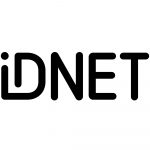
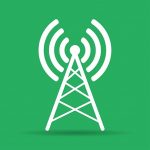
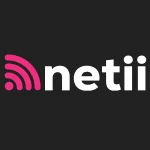


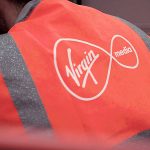
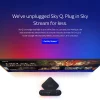
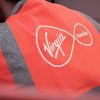










































From the report:
“Total revenue decreased 5.6% year-over-year”
I’m wondering which LTE band they will use for direct to cell? Potentially great news for deep rural areas where not-spots are still everywhere.
My current prediction is B8 5MHz on EARFCN 3650. B8 5MHz is slowly being shut off with 3G switchoff, and I know it is being refarmed in some places but it’s the most logical band right now to me anyways
In the US where the service is already live I believe they are using band 25 (1900 MHz), but I don’t know the detail or if the Starlink satellites are capable of multiple bands.
Fixed coverage up. Customer numbers and take up % down. Revenue down.
Running hard to stand still.
Daisy integration will help numbers in next quarter.
FT reporting in talks to buy Netomnia.
No article about o2’s above inflation price rises that Martin Lewis has ripped into both them and ofcom about?
Done already a week ago.
https://www.ispreview.co.uk/index.php/2025/10/o2-uk-increases-mid-contract-price-hikes-for-mobile-customers.html
Will be interesting how this direct to cell service performs in these rural areas and what the handover between terrestrial and non terrestrial networks is like.
I suspect it will be a lot more costs effective to partner with the likes of starlink to offer ubiquitous coverage in sparsely populated places than to try and build of conventional networks using macro masts. Not to mention a lot quicker.
Absolutely, got to be more economic to partner/subsidise some of the remotest areas than build fibre out to them, you also have to consider the ongoing cost of maintaining that ultra rural long distance fibre serving very few premises. This penny doesn’t seem to be anywhere near dropping with the likes of BDUK though.
I’m sorry, but what mugs. I pay £15 a month for my Smarty unlimited sim which I’ve got in a 5G router. That is my home broadband and I easily get 500 mbps and around 150 mbps upload.